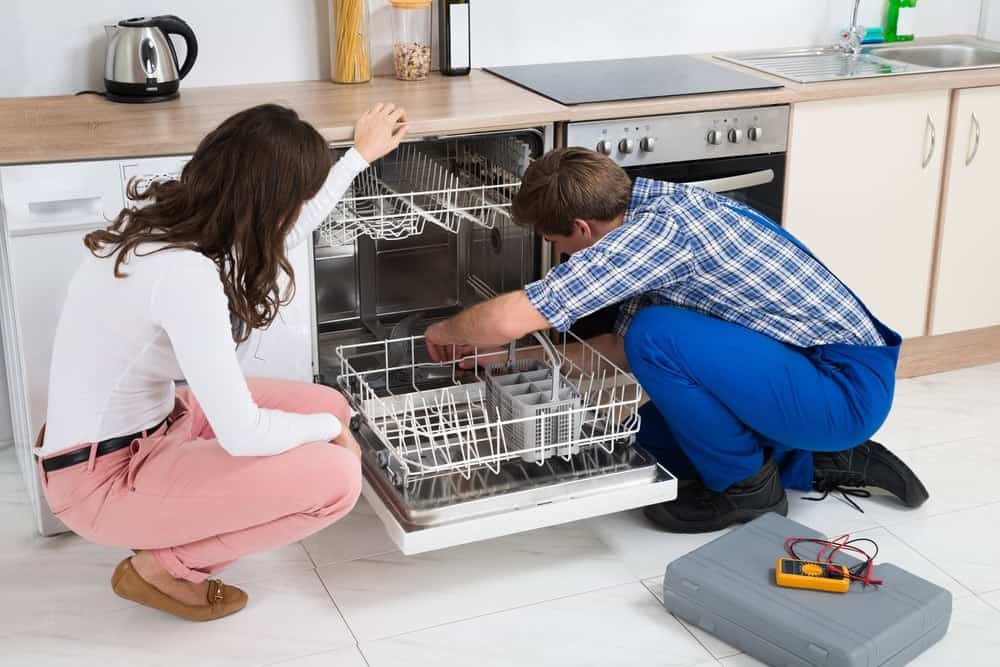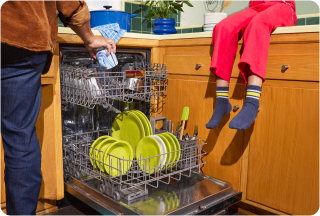How to Drain Your Dishwasher

Don't let your drain drag you down. Fight back and learn how to unclog your dishwasher before calling a professional.


Don't let your drain drag you down. Fight back and learn how to unclog your dishwasher before calling a professional.
Many of us have been there before. You open the dishwasher, ready to put the dishes away, only to look down and see a pool of soapy, grimy water standing at the bottom of the machine. Don’t call the plumber just yet – a clogged dishwasher can sometimes be fixed without the help of a professional. Take control of your train by following these step-by-step instructions on how to properly fix a clogged dishwasher.
Step 1: Prepare Your Dishwasher
Before you begin tackling your dishwasher draining issues, make sure you’ve removed all dishes and silverware from the machine. If they are still dirty, be sure to separate them from your other dishes so that you can return to cleaning them once your dishwasher has been fixed. You’ll also want to remove the bottom dishwasher rack for easy access to the machine.
Step 2: Make Sure Your Dishwasher is Turned Off
Now that the dishwasher is free of dishes - go ahead and turn off the electricity running to both your dishwasher and garbage disposal. It’s very important that you ensure no current is traveling to the machine. Water and electricity don’t fair well together, as
Related: 5 Tips to get the most out of your dishwasher
Step 3: Remove the Stagnant Water With a Towel
Once the machine has been disconnected from its power source, begin removing any standing water with a towel. Not only is this necessary for cleaning the dishwasher, but it also reduces the chances of slipping and falling while working around the dishwasher.
See how a home warranty plan steps in when your dishwasher’s not doing its job.

Step 4: Perform a Check On the Drain Hose
Now it’s time to check the drain hose. The drain hose is the tube that links the dishwasher with your garbage disposal. This is located either under your sink or behind the dishwasher itself. For the latter, you’ll need to first pull your dishwasher away from the wall to access the hose.
Step 5: Remove Drain Hose and Clean
Once you’ve located the hose, disconnect it from the machine. To disconnect the hose, you will likely need some pliers to loosen or remove the clamp. Placing a shallow pan or dish below the hose will help catch any water that may spill. After removing the hose, you can begin clearing it out. You can use commercial de-cloggers or, if you’re feeling extra handy, you can make your own out of a straightened coat hanger. If you don’t discover any debris disrupting the hose, then there might be a clog in the dishwasher drain itself.
Step 6: Check Dishwasher Drain
Look for the basket shaped component at the bottom of your dishwasher. Remove it with a screwdriver and then, just like you did with the drain hose, use a de-clogging device to remove any debris that may be clogging the drain. If your dishwasher is still not draining properly at this point, then it’s time to call an AHS professional.
To many people’s surprise, it’s quite simple learning how to unclog a dishwasher drain without the help of a professional. However, if not done properly, your dishwasher may accrue further damages. To protect your budget from unexpected breakdowns and repairs to your major home systems and appliances, consider getting a home warranty.
AHS assumes no responsibility, and specifically disclaims all liability, for your use of any and all information contained herein.
Have a plan for your home when things don't go according to plan
Shop Home WarrantiesDevelopment